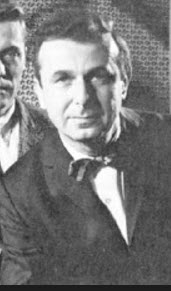-
(b.) -1922 November 28(d.)1982
Bio/Description
A cyberneticist who worked at Bell Labs, he started his career as a radio serviceman and electronics hobbyist. In 1950, he went to work as a wireman on the IAS machine (the first electronic computer built at the Institute for Advanced Study (IAS), in Princeton, New Jersey, USA). He worked for Julian Bigelow and encountered John von Neumann and Albert Einstein. At the same time he began taking night courses in engineering at New York University. When the IAS project ended in 1956, he joined Bell Laboratories where he worked on human perception, computer vision and graphics. In 1966, he and Ken Knowlton were experimenting with photomosaic, creating large prints from collections of small symbols or images. In Studies in Perception I they created an image of a reclining nude (the dancer Deborah Hay), by scanning a photograph with a camera and converting the analog voltages to binary numbers which were assigned typographic symbols based on halftone densities. It was printed in The New York Times on 11 October 1967, and exhibited at one of the earliest computer art exhibitions, The Machine as Seen at the End of the Mechanical Age, held at the Museum of Modern Art in New York City from November 25, 1968 through February 9, 1969. He is best known for his highly pixelated, block portrait of Abraham Lincoln from the American five dollar bill. It was created to illustrate his 1973 article, ?The Recognition of Faces?. In 1976, Salvador Dal? used his image as the basis of his Gala Contemplating the Mediterranean Sea. Publications he has authored or co-authored are: (1971). Identification of Human Faces. Proceedings of the IEEE, 59(5):748-760 with Goldstein, A. J., and Lesk, A. B.; (1972) ?Man-Machine Interaction in Human-Face Identification? Bell Syst. Tech. J., 51(2):399-427 with Goldstein, A. J., and Lesk, A. B.; (1972). ?Automatic Recognition of Print and Script? Proceedings of the IEEE (60), No. 10, October 1972, pp. 1165?1177; (1973). Masking in Visual Recognition: Effects of Two-Dimensional Filtered Noise. Science (1973 Jun 15) 180:1194?1197 with Julesz, B.; (1973). The Recognition of Faces. Scientific American (1973 Nov) 229(5):71-82; (1978) ?Identification of human face profiles by computer? Pattern Recognition 10(5-6): 301-312 with Kuo, S. C., Ramig, P.F. and Raudkivi, U.; (1978) ?Automatic Recognition of Human Face Profiles? Computer Graphics and Image Processing, 6(2):135-156 with Hunt, W. F.; and (1981) ?Machine Identification of Human Faces? Pattern Recognition, 13(2):97-110 with Khan, M. K., Lasch, R. and Ramig, P.F. ?Turing?s Cathedral? by George Dyson notes his ?Report of tests made on two groups of ?Round Robin? Williams storage tubes at IAS?, 6 July 1953. [IAS]
-
Date of Birth:
1922 November 28 -
Date of Death:
1982 -
Gender:
Male -
Noted For:
Codeveloper of the Photomosaic - a photographic mosaic, which is a picture that has been divided into rectangular sections, each of which is replaced with another photograph that matches the target photo; also, developed computerized human-face identification -
Category of Achievement:
-
More Info:


